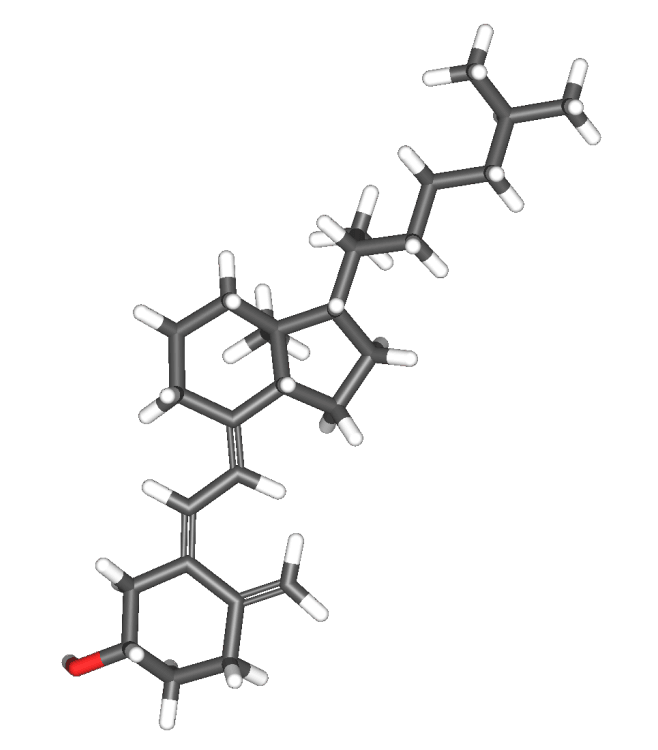
Creative Biolabs is a contract research organization specialized in offering customized services for the development of antibodies for use in diagnostics, drug discovery, and basic research. Especially, we provide the expertise and personnel to offer high-quality in vitro diagnostic (IVD) antibody development services targeting a wide range of high-value diagnostic biomarkers to our clients. Here, we introduce our IVD antibody development services for vitamin D marker.
Vitamin D
Vitamin D is a group of fat-soluble secosteroids responsible for increasing intestinal absorption of calcium, magnesium, and phosphate, and multiple other biological effects. There are several forms of vitamin D exist, the two major forms of which are vitamin D2 and D3. These are known collectively as calciferol. Vitamin D2 and D3 can be ingested from the diet and supplements. The major natural source of the vitamin is a synthesis of cholecalciferol in the skin from cholesterol through a chemical reaction that is dependent on sun exposure. Vitamin D has a significant role in calcium homeostasis and metabolism. Calcitriol, a hormone circulating in the blood, has a major role in regulating the concentration of calcium and phosphate and promoting the healthy growth and remodeling of bone. Calcitriol also has other effects, including some effects on cell growth, neuromuscular and immune functions, and reduction of inflammation.
 Fig.2 Chemical structures of Vitamin D.1
Fig.2 Chemical structures of Vitamin D.1
Vitamin D Marker of Liver Cirrhosis
The liver plays an important role in vitamin D metabolism. Vitamins D2 and D3 derived from food and supplements, and vitamin D3 obtained via sunlight exposure, undergo hydroxylation in the liver forming 25-hydroxyvitamin D [25(OH)D], which is then hydroxylated mainly in the kidneys to 1,25 dihydroxy vitamin D [1,25(OH)2D], the biologically active form of vitamin D. The liver also produces bile acids, which are necessary for optimal gastrointestinal absorption of vitamin D obtained from foods or supplements. Vitamin D metabolites undergo enterohepatic circulation, and in the setting of liver dysfunction, impaired excretion of vitamin D metabolites may inhibit production or activation of 25(OH)D.
Vitamin D deficiency is often observed in the chronic liver disease. Vitamin D level may be an important survival marker of advanced liver cirrhosis. Different vitamin D levels and the severity of liver failure have a significant relationship with each other in patients with liver cirrhosis, so serum vitamin D level decreases as liver failure severity increases.
Vitamin D Marker of Metabolic Bone Disease
The primary function of vitamin D is to elevate plasma calcium and phosphorus to normal and supersaturating levels that lead to the mineralization of the skeleton. Vitamin D-resistant failures in mineralization is vitamin D-dependency rickets type I, which preventing encoding the enzyme responsible for converting the circulating form of vitamin D to the active hormone. Also of great importance is vitamin D-dependency rickets type II, which results from mutations in the VDR gene. Some mutations render the VDR inactive and others modify the VDR so that larger doses of the vitamin D hormone are needed to be effective.
Vitamin D Marker of Skin Disorders
Skin is a target of vitamin D action, as has been clearly established by the presence of the VDR in keratinocytes, sebocytes, and dermal papilla cells and by the suppression of keratinocyte proliferation in vitro by 1,25-(OH)2D3. The discovery that 1,25-(OH)2D3 suppresses keratinocyte proliferation and causes differentiation of promyelocytes to monocytes stimulated interest in the effects of 1,25-(OH)2D3 on keratinocytes. Topical application of 1,25-(OH)2D3 showed promise as a treatment for psoriasis, which is characterized by the hyperproliferation of keratinocytes, indicating the potential use of such compounds for the diagnostic of this disorder.
Vitamin D Marker of Melanoma Cancer
A role for the vitamin D system in cancer was first suggested by cell culture studies using melanoma cell lines. In these in vitro studies, 1,25-(OH)2D3 was shown to inhibit proliferation and cause the differentiation of the cells at concentrations of ~1 nm. Since then, a large number of epidemiological studies have been published showing inverse relationships between melanoma cancer incidence and ultraviolet irradiation, vitamin D intakes and circulating levels of 1,25-(OH)2D3.
IVD Antibody Development Services Targeting Vitamin D Marker
IVD antibodies have been widely used for disease screening and therapeutic monitoring. As a research partner with years of experience in high-quality antibody development and production, Creative Biolabs offers one-stop solutions from antigen design to antibody pair screening. Besides, we also offer diagnostic immunoassay development services, including feasibility analysis, assay design, assay protocol establishment, assay optimization, and kit production.
Our services can be tailor-designed to adapt to the specifications of your project. If you are interested in our services, please do not hesitate to contact us for more details.
Reference
- From Wiki: By Sbrools - Own work, CC BY-SA 3.0, https://commons.wikimedia.org/wiki/File:Cholecalciferol-3d.png?uselang=zh-cn
For Research Use Only.

